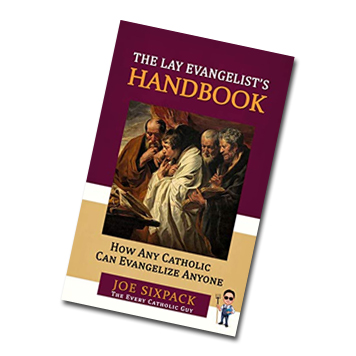Frozen Baby Embryos: Persons Or Property?
By MIKE MANNO
A Colorado divorce case may, for good or ill, help establish a lasting precedent over how to handle (or perhaps “dispose of”) embryos remaining in cryogenic storage after in vitro (IVF) fertilization procedures.
Mandy and Drake Rooks used IVF to have a son and later twins. Created at the same time were six other embryos that were left in storage. The dad later filed a petition for divorce and asked for custody of the “frozen embryos” so that he could destroy them. The mother, on the other hand, wanted the embryos for possible future implantation.
The trial court “awarded” — a property rights concept — the embryos to dad finding that he had a “negative right” to avoid the burdens of fatherhood and that right outweighed Mandy’s interest in preserving them. On appeal the trial court’s decision was upheld. The appeals court noted that American courts have adopted three different approaches to determine the disposition of these embryos:
The contract approach simply enforces a contractual decision the parties made about embryo disposition when the embryos were created. Of course, sometimes one or both of the parties will change their minds, which, in most cases, will render the contract unenforceable.
The second is the balancing interest test which simply weighs the interests of each of the parties to make a determination.
Third, and least used, is the contemporaneous mutual consent approach, adopted in Iowa in a 2003 case, which simply leaves the embryos in cryogenic storage until the parties either agree on a plan or the embryos succumb naturally.
Note that none of the approaches considers the humanness of the embryo.
The Colorado Court of Appeals, in affirming the trial court, opined that the balancing test was the most fair and practical and held that in balancing the competing rights between the parties, Drake’s interest in not becoming a father again was greater than Mandy’s interest in having a fourth child.
The case has now been appealed to the Colorado Supreme Court where, at this writing, no oral argument has yet been scheduled; however, a flurry of amicus briefs is being filed, including one from the American Association of Pro-Life Obstetricians and Gynecologists (AAPLOG) supporting Mandy’s position. It opines that in these matters courts should treat frozen embryos as human beings, not as property.
“Neither Colorado law nor justice permits the court to terminate embryos’ lives without a compelling reason,” it argues, urging the court to take judicial notice of scientific facts that establish that a fully human life begins at fertilization.
That embryos are human beings may seem a strange statement in these times, but there is one reported case where a trial court did make that determination. In the 1992 Tennessee divorce case Davis v. Davis the parties were able to agree on all issues except the disposition of seven frozen embryos. The wife wanted them for implantation, but the husband wanted them kept frozen until he decided whether he wanted to become a parent.
Ruling that the embryos were human beings from fertilization, the court awarded “custody” of the embryos to mom. The court of appeals reversed and using the balancing test found, much as the Colorado court did, that the father had the constitutional right not to “beget a child where no pregnancy has taken place” and that there was no compelling state interest to justify allowing an implantation against the will of either party.
It also relied on a federal district court case in Virginia, York v. Jones, where parents moving across the nation had asked and were refused their request to have their embryos released to a clinic in California. There the court ruled that the embryos were property and the situation was akin to a bailment and the original clinic was obligated to return the “bailed” property.
Before the case could be decided by the Tennessee Supreme Court, mom remarried and changed her position on the embryos; she no longer wished for implantation but that they be donated to a childless couple and dad now wanted them destroyed.
The court, to resolve the case, then looked at a balancing test to weigh the interests of both parties with no reference to the rights of the embryos being cryogenically stored in a Knoxville fertility clinic.
It first noted that there were three major legal positions on the matter: the first was that the embryo was human and should be accorded all rights as a person; the second was that the embryo had no status different than any other human tissue and there were no limits on what action could be taken; and the third, that the embryo should receive more consideration than property (tissue) but not that of a fully human being.
It then ruled that the embryos were neither persons nor property but fell into an interim category in which they were entitled to special respect because of their “potential” for human life. “Their value,” the court said, “lies in the potential to become, after implantation and growth and birth, children.” It also held that “the right of procreational autonomy is composed of two rights of equal significance — the right to procreate and the right to avoid procreation.”
The court in Davis, which the Colorado appeals court used as guidance, made a few fundamental errors.
First, it made a distinction between implanted embryos which commence a pregnancy and those that are held in storage. Using the term “pre-embryo” to refer to the latter, it held that they were not life, only potential life.
Second, it completely misunderstood the physical development of an embryo and held that it was not fully a human product until late in its development. Both concepts have been found in error by more modern scientific research.
Third, it held that the male genetic donor had the right to decide against fatherhood, disregarding the obvious fact that he was already a father.
In its brief AAPLOG argues that — especially in light of additional scientific findings not generally recognized in 1992 — the balancing test as articulated in Davis and followed by the Colorado appeals court was wrong. It criticized the Davis formula for incorrectly applying a sliding standard of when and how an embryo becomes human and argued that the embryos should be treated as human beings.
“Modern biological science, which stands separate and apart from any litigant, objectively establishes that human embryos are living human beings. Science contradicts the trial court’s finding that embryos ‘are a form of property that may be allocated between the parties’,” it said.
“Since the Davis court’s chief rationale for denying the humanity of the early embryo — its belief that a human being did not develop until implantation — is not supported by current science, this court should not rely on Davis or its progeny to privilege a parent’s desire to terminate embryonic life over the other parent’s desire to protect their offspring, or to deny an embryo’s rights as a human being,” AAPLOG argued.
This case, like all others brought into the judicial system, is composed of specific facts unique to the parties and issues involved, thus rulings in these cases tend to be fact-specific and difficult to apply universally. On the other hand, even the uniqueness of the issues can create a legal precedent that, while not binding in all instances, provides enough persuasive argument that other courts will tend to follow.
This case may be one of the latter and at least settle the issue of the humanity of a frozen embryo in the context of a custody fight; but no matter how favorably the state supreme court might treat Mandy’s concerns the effect will probably be limited to custody cases.
However, it will be a chip in the armor of those claiming to find only property rights. Let’s hope the court gets the science right. It could be the beginning of a slippery slope back to the proper respect for human life from its earliest stages.










